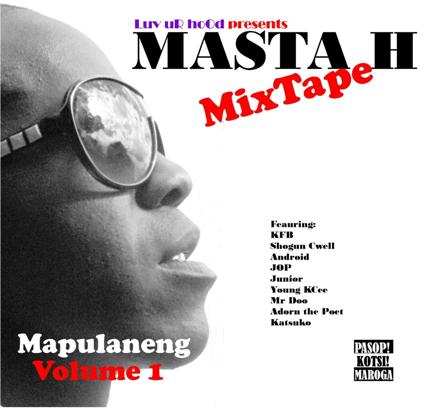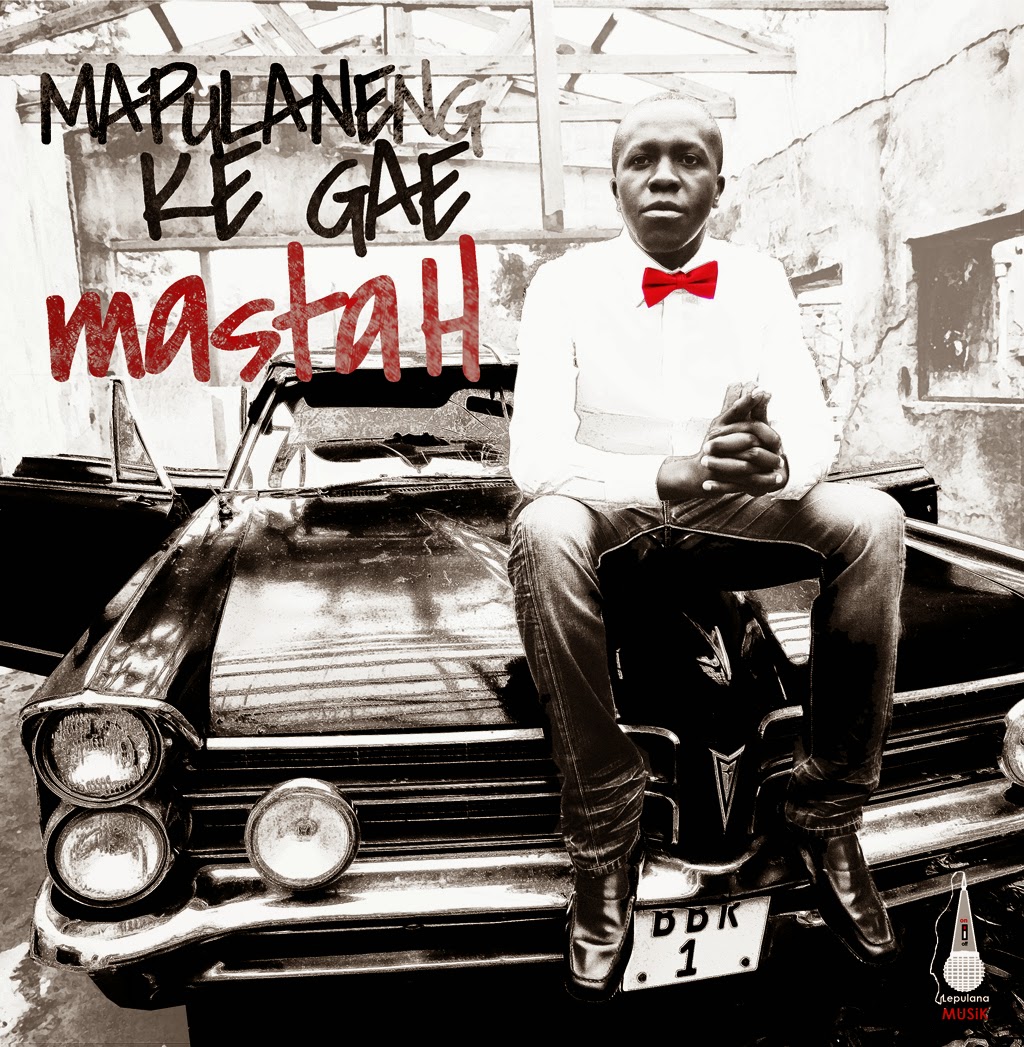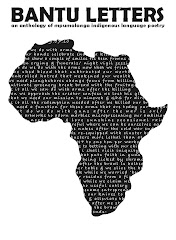
12/12/11
Onse Artist in District Six
Outlaw artist Sandra McGregor understood the vast vistas of storytelling outside of the then much-hyped oral literature and the glam offered by DRUM magazine and its genius writers such as Can Themba and Blake Modisane. Afrikans have over the years succeeded in having their knowledge transferred from one generation to the next through campfire tales – that was before someone exposed the pen and paper to them. Folk tales have survived various assaults since nobody had the power to burn – literally every Black person with a story embedded in their mind. And when they started using various mediums such as photography (Alf Khumalo), sculpting, painting etc the apartheid wheels came off.

12/6/11
The Artist in Our Garden - A Review
 Apartheid was terrible because not only did it deny the majority of people a chance at self-determination but it also robbed its practitioners of an opportunity to discover a beauty outside of themselves. A beauty that was not pink or peach but Black – quite probably brown. Thus, the architects and their apologists were left existing in an aquarium environment of gross ignorance where everything that shone was gold.
Apartheid was terrible because not only did it deny the majority of people a chance at self-determination but it also robbed its practitioners of an opportunity to discover a beauty outside of themselves. A beauty that was not pink or peach but Black – quite probably brown. Thus, the architects and their apologists were left existing in an aquarium environment of gross ignorance where everything that shone was gold.
This was the sad indictive conclusion I reached after reading – quite critically Angela Read Lloyd’s biography of Moses Tladi, the first South African Black artist working in an international style - titled The Artist in the Garden, the Quest for Moses Tladi. A beautiful picture-driven bio of an artist who never occupied any space in the mind of the Boer art fundis because their state decided he shall not be acknowledged as existing in a country of his birth. He is called the artist in the garden because, as apartheid would have liked it – the best idea of a Black person for anyone visiting South Africa was supposed to be that of a garden worker or miner who at the end of the day was so tired that he would not see the need to explore any career outside of the confines of subjugation.
Tladi, in that institutionalised oppressive system managed to become a painter, a brilliant one at that who captured the aesthetic of his institutional captivity with the view of a bird in a cage. When you look inside a cage all you see is a bird, but you’ll never know what it sees when it looks outside. One poet once said that ‘a bird, even in a golden cage still years for freedom’. True, the golden cage only charms the captor but the bird can see the freedom that exists beyond such glittering confines. Tladi escaped the cage in ways that made the captor angry and feel more the need to suppress his creative spirit.
The story of Tladi is the story of musician Enoch Sontonga, the story of author Merriam Tlali, the late sage Es’kia Mphahlele and all the Black soldiers who took part in the Second World War only to be relegated to footnotes when the story was finally told by Field Marshall Jan Smuts and his Boer generals.
It is a counter-story to Pablo Picasso’s imagined, media-hyped and celebrated genius, Breyten Breytenbach’s literary eccentricism and JM Coetzee’s purported eye for detail. The story of a star that continued to survive against all odds – even when the sun rose. The man who refused to be shackled and packaged in a box.
It’s for that reason that Lloyd’s endeavour to expose this rare gem deserves proper appraisal in a world that is known for giving posthumous awards instead of lifetime achievements and excellence prizes. While the consumption of artworks, especially the visual genre is still an elite hobby in our country it is through good narratives such as this that consciousness will someday replace literary apathy.
The Artist in the Garden – the Quest for Moses Tladi is available is all good book stores. I loved it and I promise you my sentiments shall be yours when you finally flip page 293
TO COMMENT ON THIS POST GO TO OUR FACEBOOK PAGE: THE Kasiekulture BLOG & write your comment on the wall
 Apartheid was terrible because not only did it deny the majority of people a chance at self-determination but it also robbed its practitioners of an opportunity to discover a beauty outside of themselves. A beauty that was not pink or peach but Black – quite probably brown. Thus, the architects and their apologists were left existing in an aquarium environment of gross ignorance where everything that shone was gold.
Apartheid was terrible because not only did it deny the majority of people a chance at self-determination but it also robbed its practitioners of an opportunity to discover a beauty outside of themselves. A beauty that was not pink or peach but Black – quite probably brown. Thus, the architects and their apologists were left existing in an aquarium environment of gross ignorance where everything that shone was gold.This was the sad indictive conclusion I reached after reading – quite critically Angela Read Lloyd’s biography of Moses Tladi, the first South African Black artist working in an international style - titled The Artist in the Garden, the Quest for Moses Tladi. A beautiful picture-driven bio of an artist who never occupied any space in the mind of the Boer art fundis because their state decided he shall not be acknowledged as existing in a country of his birth. He is called the artist in the garden because, as apartheid would have liked it – the best idea of a Black person for anyone visiting South Africa was supposed to be that of a garden worker or miner who at the end of the day was so tired that he would not see the need to explore any career outside of the confines of subjugation.
Tladi, in that institutionalised oppressive system managed to become a painter, a brilliant one at that who captured the aesthetic of his institutional captivity with the view of a bird in a cage. When you look inside a cage all you see is a bird, but you’ll never know what it sees when it looks outside. One poet once said that ‘a bird, even in a golden cage still years for freedom’. True, the golden cage only charms the captor but the bird can see the freedom that exists beyond such glittering confines. Tladi escaped the cage in ways that made the captor angry and feel more the need to suppress his creative spirit.
The story of Tladi is the story of musician Enoch Sontonga, the story of author Merriam Tlali, the late sage Es’kia Mphahlele and all the Black soldiers who took part in the Second World War only to be relegated to footnotes when the story was finally told by Field Marshall Jan Smuts and his Boer generals.
It is a counter-story to Pablo Picasso’s imagined, media-hyped and celebrated genius, Breyten Breytenbach’s literary eccentricism and JM Coetzee’s purported eye for detail. The story of a star that continued to survive against all odds – even when the sun rose. The man who refused to be shackled and packaged in a box.
It’s for that reason that Lloyd’s endeavour to expose this rare gem deserves proper appraisal in a world that is known for giving posthumous awards instead of lifetime achievements and excellence prizes. While the consumption of artworks, especially the visual genre is still an elite hobby in our country it is through good narratives such as this that consciousness will someday replace literary apathy.
The Artist in the Garden – the Quest for Moses Tladi is available is all good book stores. I loved it and I promise you my sentiments shall be yours when you finally flip page 293
TO COMMENT ON THIS POST GO TO OUR FACEBOOK PAGE: THE Kasiekulture BLOG & write your comment on the wall
briefly:
artist in the garden,
gakwi mashego,
kasiekulture,
moses tladi
Subscribe to:
Posts (Atom)











